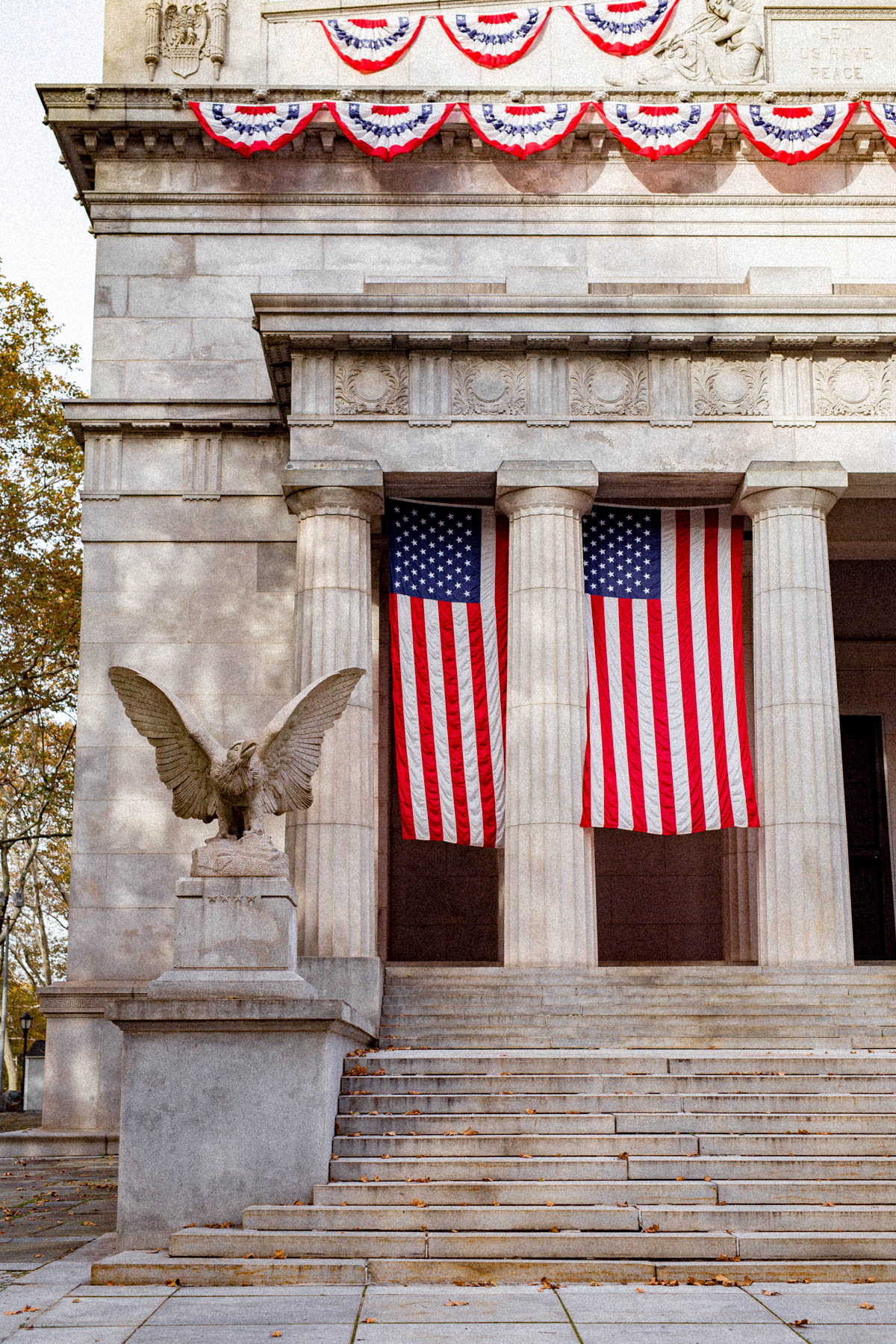
This list of national parks in New York City was written by Antonina Pattiz, founder of New York Simply (the official partner of Apple Maps). Happy to have you here!
New York City is steeped in history so rich you can easily spend years discovering new gems. I currently live in the Big Apple and have a passion for history. I thought it would be fun to roundup all of the important national park sites in New York City. Longtime readers know that I’m not one for small talk, let’s cover everything you need to know!
Visiting New York City? If you haven’t decided where to stay (yet) check out our helpful guide on Where to Stay in New York City (The 10 Best Neighborhoods & 3 to Avoid). Don’t have time? Here’s my favorite hotel in NYC, hands down.
New York City National Parks Sites
(Table of Contents)
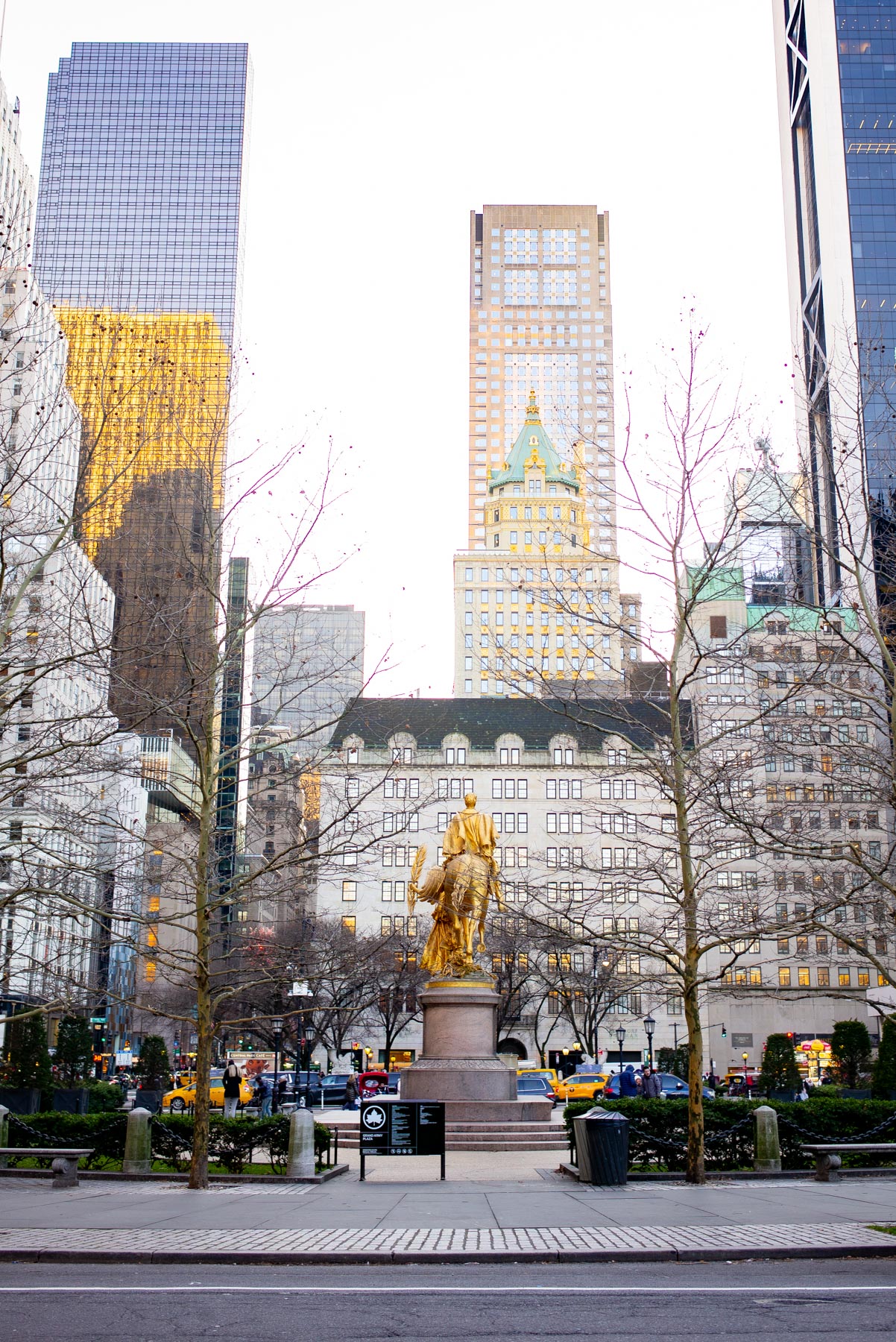
Know the Difference: National Parks vs. National Monuments, etc.
I think it’s important to point out the difference between the various national park sites in New York City. There’s a handful of labels being thrown around, and they don’t all mean the same thing. In NYC, you’ll come across three designations: National Monuments, National Memorials and National Historic Sites.
Here’s a quick breakdown of the definitions, which will help you better understand the reason certain places are labeled the way they are.
National Monuments: A significant area of land (or water) protected to ensure that the historic importance of the area is preserved from destruction and development. In other words, you can think of the national monuments in New York City as sacred land.
National Memorials: National memorials in New York City memorialize a historic person or significant historic event. This makes them different from national monuments because the focus is on a person or event, not land.
National Historic Sites: New York City’s National Historic Sites highlight historic buildings (childhood homes, birthplaces, etc.) directly associated with important historic figures. These buildings are preserved for their historic significance because the things that happened (or the people that lived in them) changed the course of American history.
In short, think of it this way:
- National Monuments in NYC = Sacred land
- National Memorials in NYC = In memory of a historic figure or single historic event
- National Historic Sites in NYC = Important building
If you’re interested, I’ll include more information on National Parks vs. National Monuments, Memorials and Historic Sites at the end of this article.
First, Let’s Cover National Monuments in NYC
Quick Reminder: National Monuments are protect areas of land that hold important cultural significance to the history of New York City. Think of these places as sacred land.
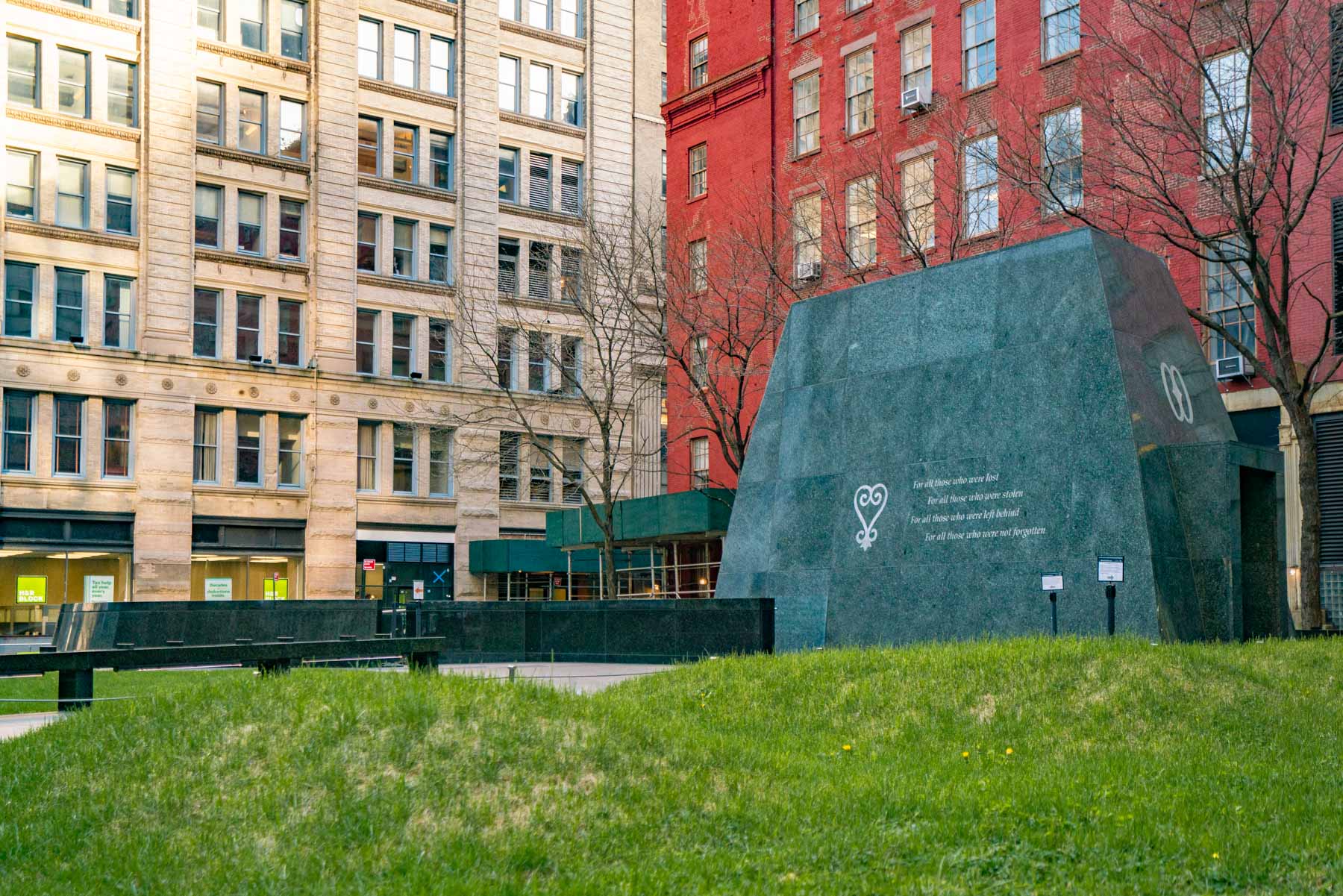
African Burial Ground National Monument
The African Burial Ground is one of the most moving national monuments in New York City. Located in Lower Manhattan, the site contains the remains of more than 419 freed and (mostly) enslaved Africans buried during the late 17th and 18th centuries.
This is the largest known (and oldest) cemetery for people of African descent in the country. Studies estimate that up to 15,000 African American people were buried in this 300-year old burial ground. When the site was unexpectedly discovered during excavation it was deemed “the most important historic urban archaeological project in the United States.”
The African Burial Ground was designated a New York City National Monument in 2006 to memorialize the role of enslaved Africans in the development of New York City.
Website: African Burial Ground National Monument
Address: 290 Broadway, New York, NY
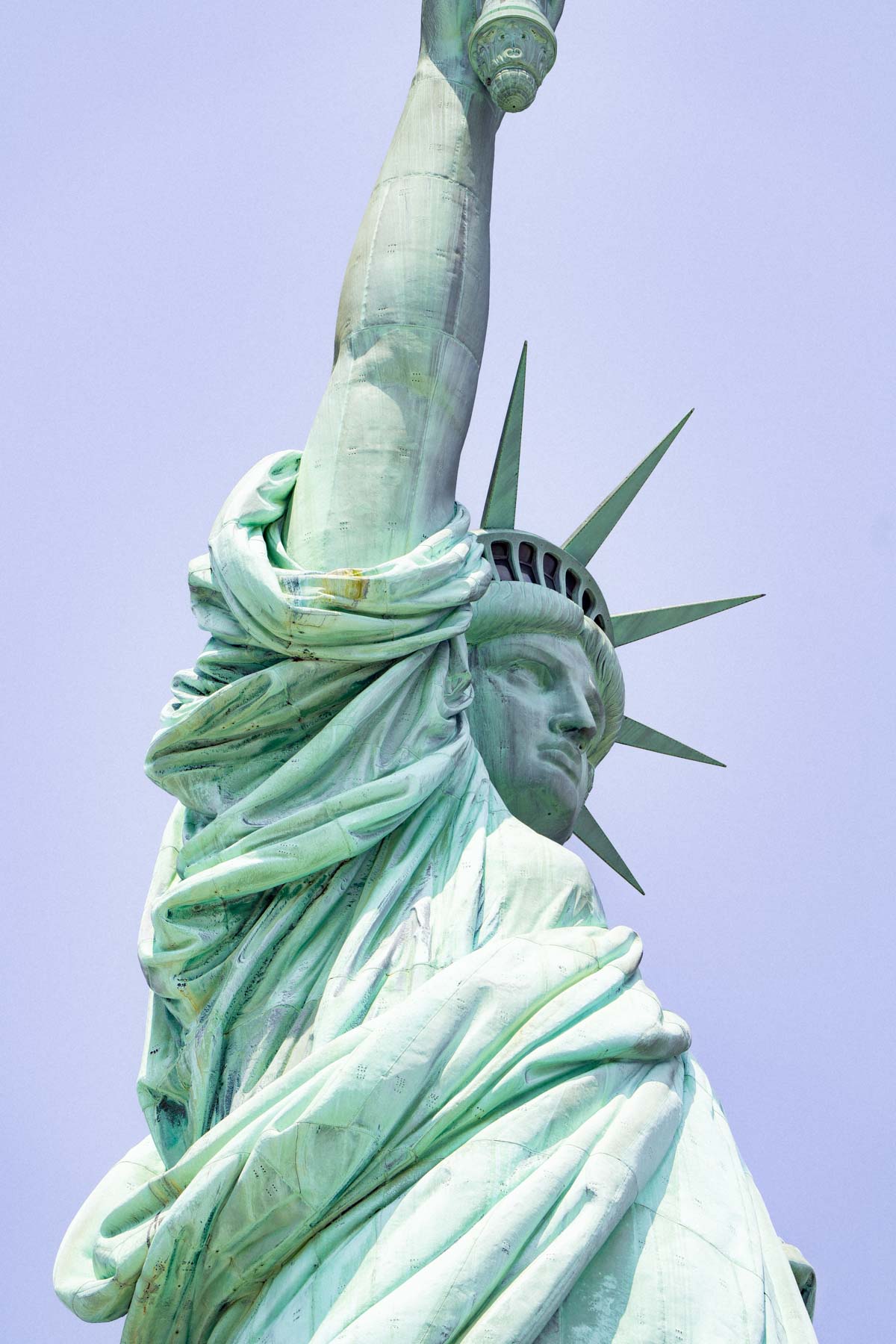
Statue of Liberty National Monument
Arguably the most famous National Monument in New York City, the Statue of Liberty is synonymous with freedom. Dedicated in 1886, Lady Liberty was a gift from the people of France to commemorate 100 years of American Independence.
Her right hand clutches a torch while the left hand holds a book inscribed July 4, 1776 (the date of the Declaration of Independence). The seven spikes adorning the crown represent the seven oceans and continents of the world, a symbol of universal liberty.
Designed by three Frenchmen, Edouard de Laboulaye, Frederic-Auguste Bartholdi and Gustave Eiffel (yep, that Eiffel). The generous gift arrived to America in 350 separate pieces and took 4 months to assemble. Today the Statue of Liberty received 4.5 million visitors annually, making it one of the most visited places in NYC.
Those that venture inside the statue will find a plaque engraved with a sonnet by Emma Lazarus titled “The New Colossus.” Lazarus wrote the poem in 1883 in an effort to raise money for the construction of the statue’s pedestal.
Give me your tired, your poor,
Your huddled masses yearning to breathe free,
The wretched refuse of your teeming shore.
Send these, the homeless, tempest-tossed to me,I lift my lamp beside the golden door!
Emma Lazarus
Website: Statue of Liberty
Location: New York City
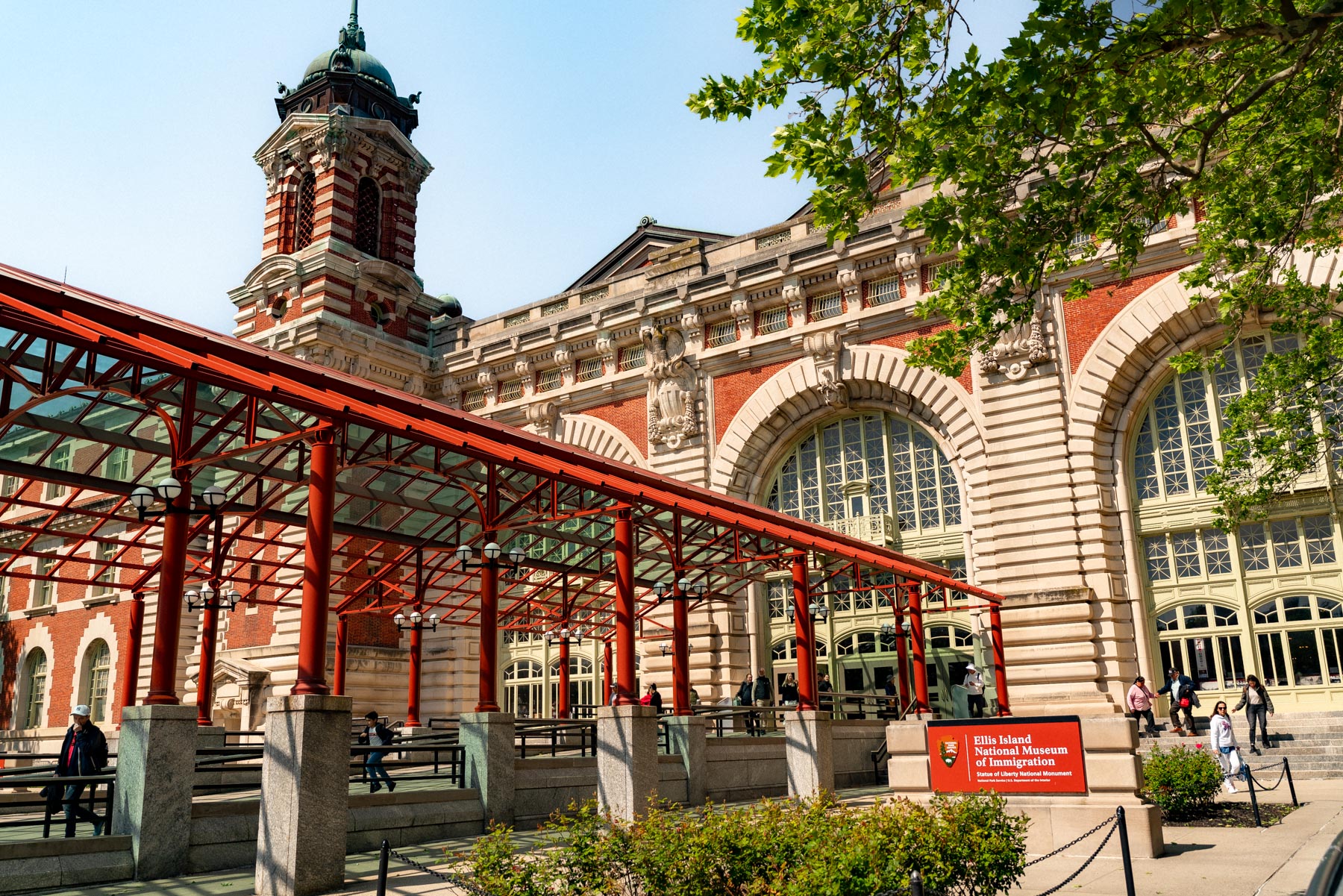
Ellis Island
Opened in 1892, Ellis Island was the nation’s principal immigration station until 1954. It processed more than 12 million immigrants in that time and the main building was recently restored after 30 years of desertion.
The Ellis Island National Immigration Museum was opened to the public in 1990 and is a must-visit for history buffs searching for the most important national parks in New York City. The building is beautiful and the history within those rich walls is immeasurable, which is why this is one of the most popular national monuments in NYC.
Website: Ellis Island National Immigration Museum
Address: Ellis Island Bridge, Jersey City, NJ
Featured in: 15 Exciting Museums in New York City (& What to See at Each)
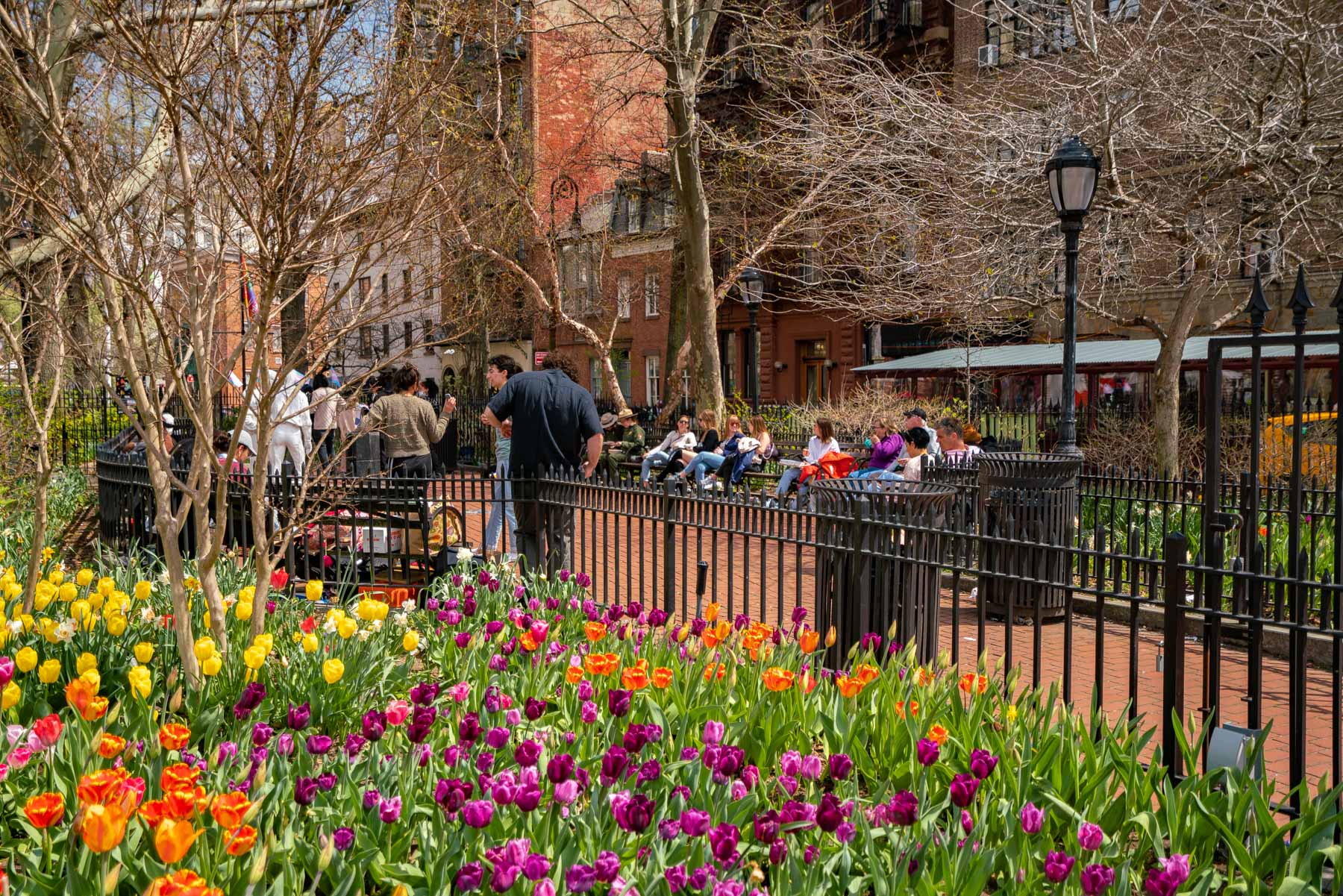
Stonewall National Monument
It’s easy to forget that the fight for gay rights was riddled with turbulence. Before the 1960s it was illegal to be openly lesbian, gay, bisexual, transgender or queer (LGBTQ). The laws in NYC were especially harsh towards those in the LGBTQ community.
Things took a massive turn during the infamous Stonewall Uprising, which took place at the Stonewall Inn on June 28, 1969. Frustrated by unjust raids, the patrons at the Stonewall Inn decided to fight back and riots ensued. These riots catapulted the LGBTQ+ community into the limelight and led to the re-evaluation of the relationship between the police and the LGBTQ+ community.
In effect, these events completely changed the course of history in America, which is why Stonewall was deemed a National Monument in New York City. Visitors are welcome to enjoy a drink at this notable gay bar while pondering the progress made and the distance yet to go.
Website: Stonewall National Monument
Address: 53 Christopher St, New York, NY
Featured in: 20 Great Things to Do in the West Village
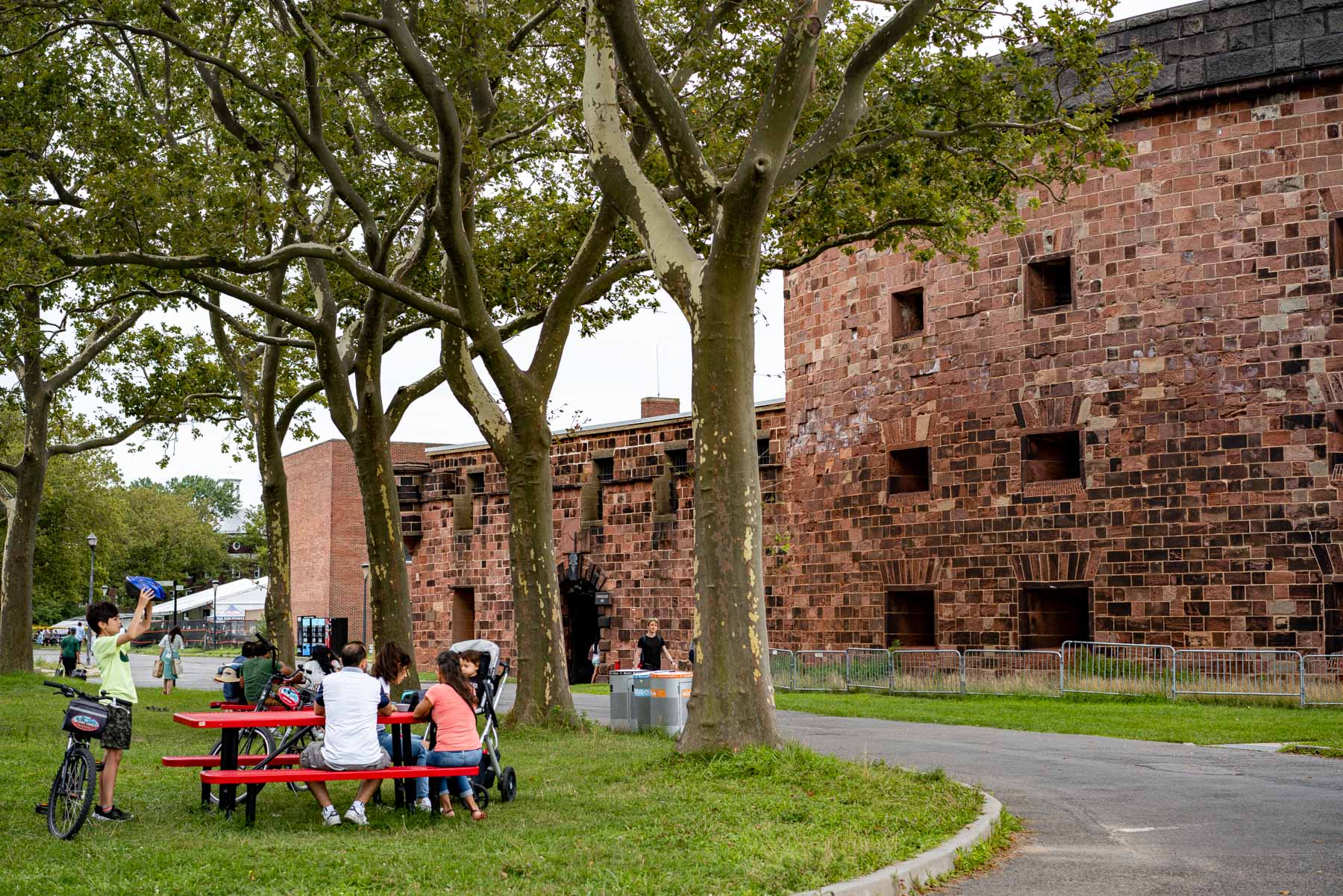
Governors Island National Monument
Located a quick ferry ride from Lower Manhattan (and Brooklyn), Governors Island was originally used as a military installation during the Revolutionary War. More recently, the island was used as military training grounds until 1996, before opening to the public in 2005.
Today visitors can explore the island to get their fill of sunshine, recreational activities, interesting public art installations and educational/culturally programming. As such, Governors Island has become a popular summer spot with locals.
Governors Island National Monument in New York City is located on the north end of the island. The area is home to two interesting military fortifications: Fort Jay and Castle Williams, which are administered by the National Park Service.
Website: Governors Island National Monument
Address: 10 South St, New York, NY
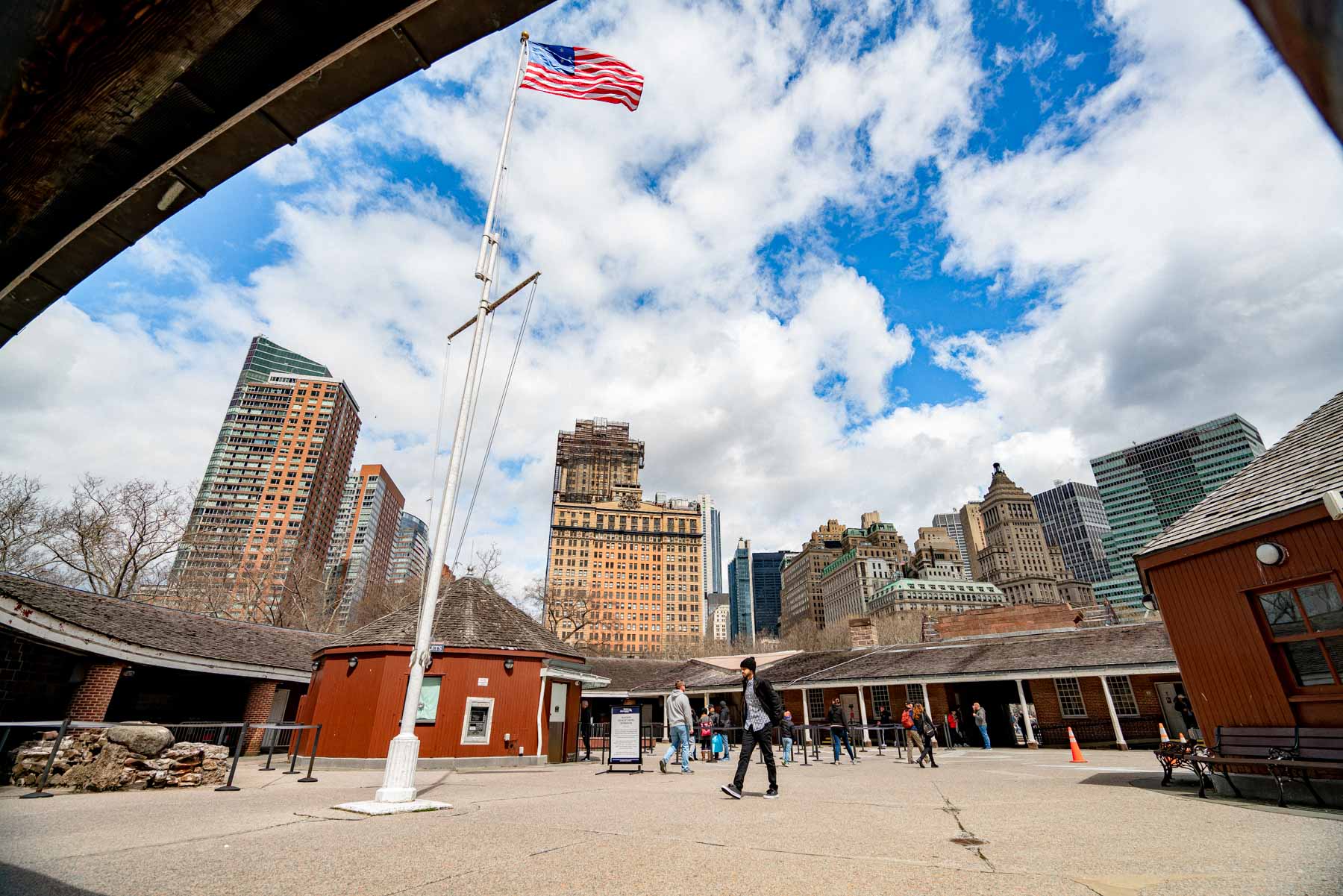
Castle Clinton
Originally built to prevent an invasion from the British army in 1812, this bastion sits at the southern tip of Manhattan. Marking the spot where New York City begins, some folks argue that Castle Clinton represents the start of our nation.
This New York City national park site holds historic significance, no doubt, but it feels like a glorified ticket booth to me (just being honest). I wouldn’t go out of my way to see, but if you’re in the area, by all means!
Website: Castle Clinton
Location: Lower Manhattan
National Memorials in New York City
Quick Reminder: National Memorials highlight important historic individuals and historic events.
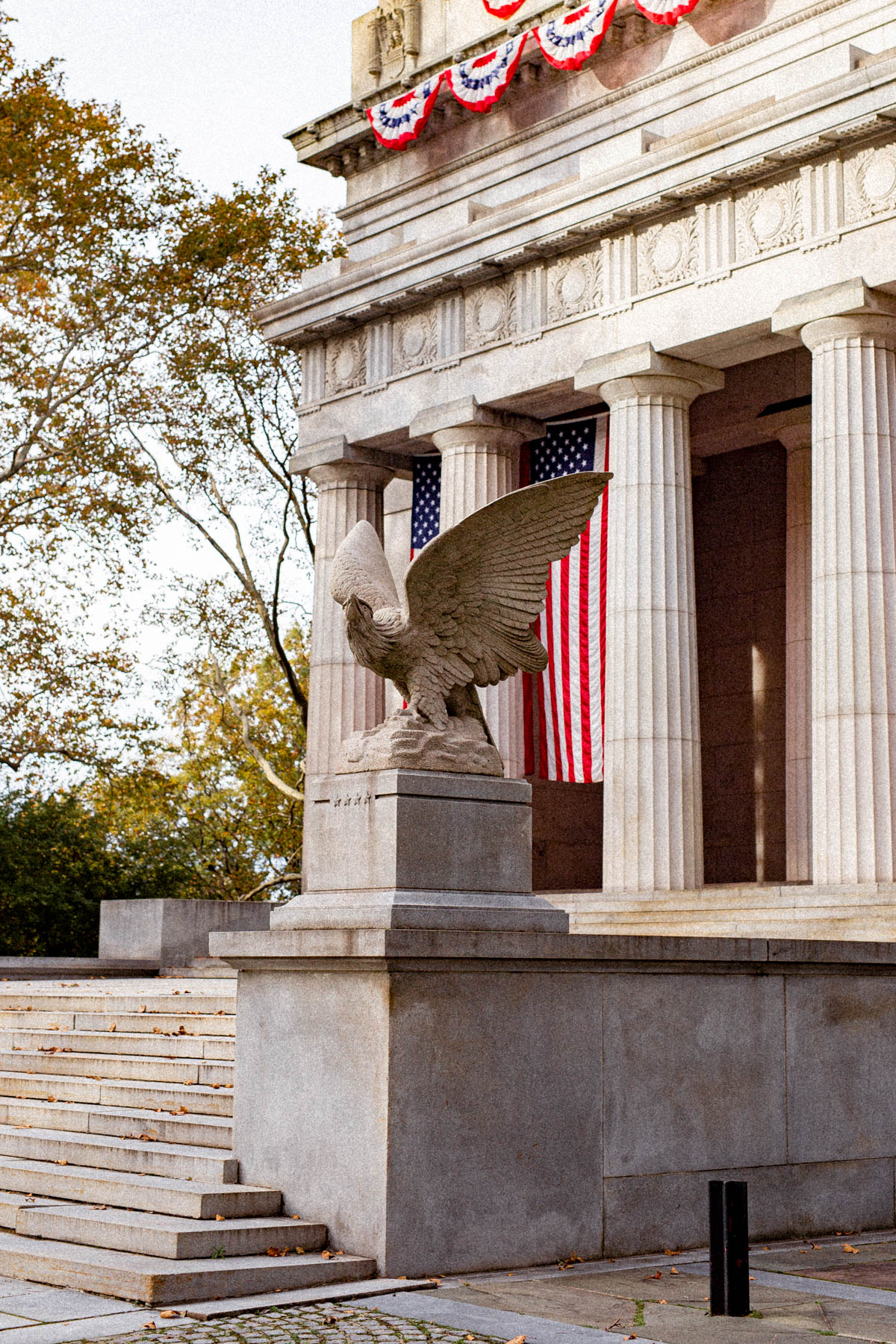
General Grant National Memorial New York City
Ulysses S. Grant was a decorated General and the 18th President of the United States. Grant’s wished to be buried next to his wife when he passed, which seems like a simply request, but it wasn’t. His options for a final resting place were limited because women were not allowed to be buried in notable military cemeteries at the time.
When Grant died from throat cancer in 1885, the mayor of New York offered to have him buried in NYC. His wife, Julia, supported the offer and a large fundraising initiative took place to build what would become the largest tomb in North America. Today, visitors can pay their respects to President Ulysses S. Grant and Julia Grant by visiting his tomb in the Upper West Side.
General Grant’s Tomb is undoubtedly one of the most beautiful national memorials in New York City. You can get free tours of the mausoleum through the National Park Service.
Website: General Grant’s Tomb
Address: W 122nd Street & Riverside Drive
Featured in: 20 Iconic New York City Buildings (You Should Know About)
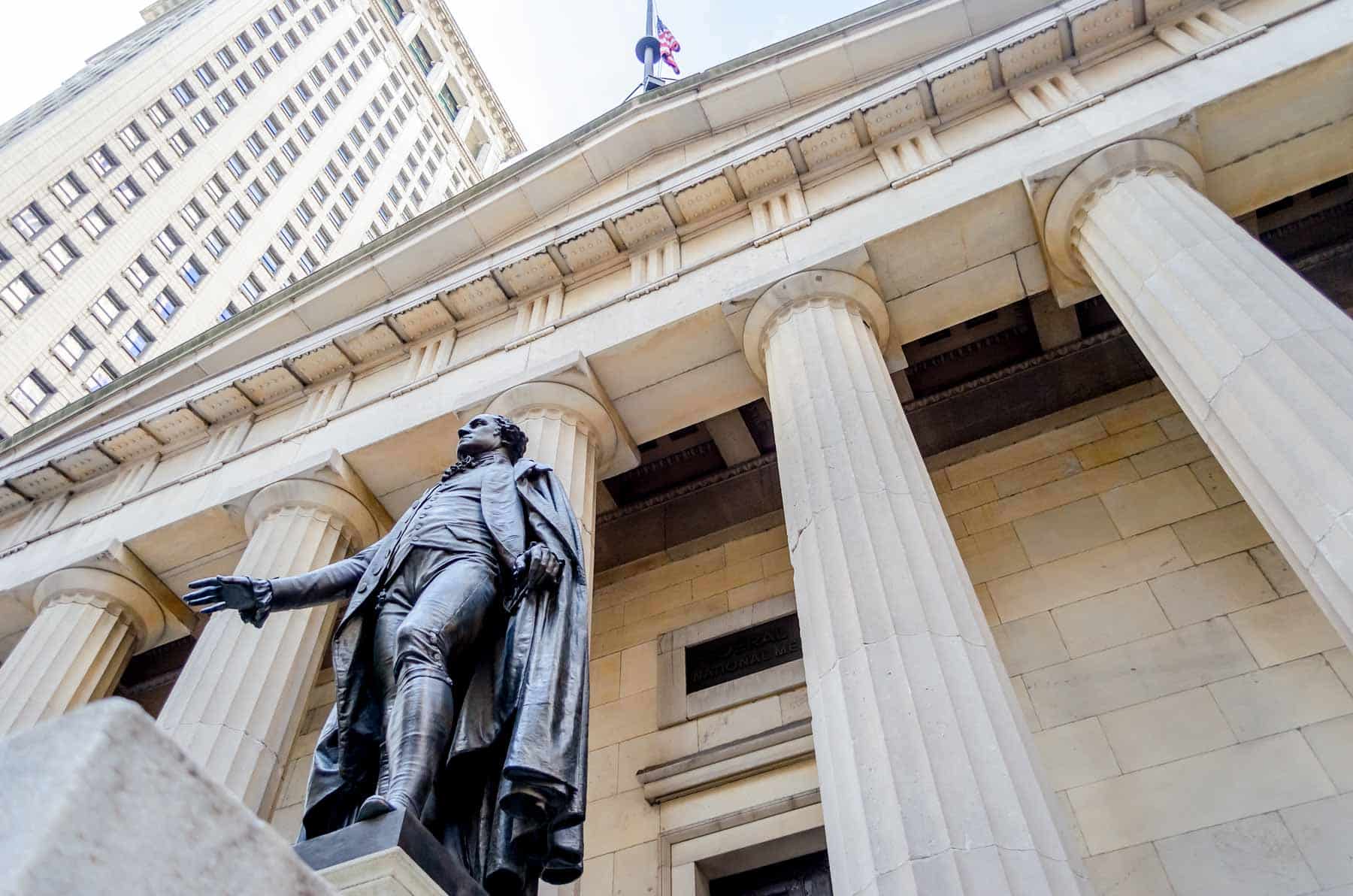
Federal Hall National Memorial
Located in the heart of Wall Street, Federal Hall memorializes a turning point in the history of the United States. It was here that George Washington took the oath of office and became the first President of our new nation.
Federal Hall was also the site of the first Supreme Court, Congress and Executive Branch of the US. Considering all of this historic context, it’s not hard to understand why Federal Hall was designated a National Memorials in New York City. Visitors can tour the building, which has been repurposed as a museum and memorial in honor of our first President and the start of our nation.
Website: Federal Hall
Address: 26 Wall St, New York
Featured in: 15 Unforgettable Things to Do in the Financial District
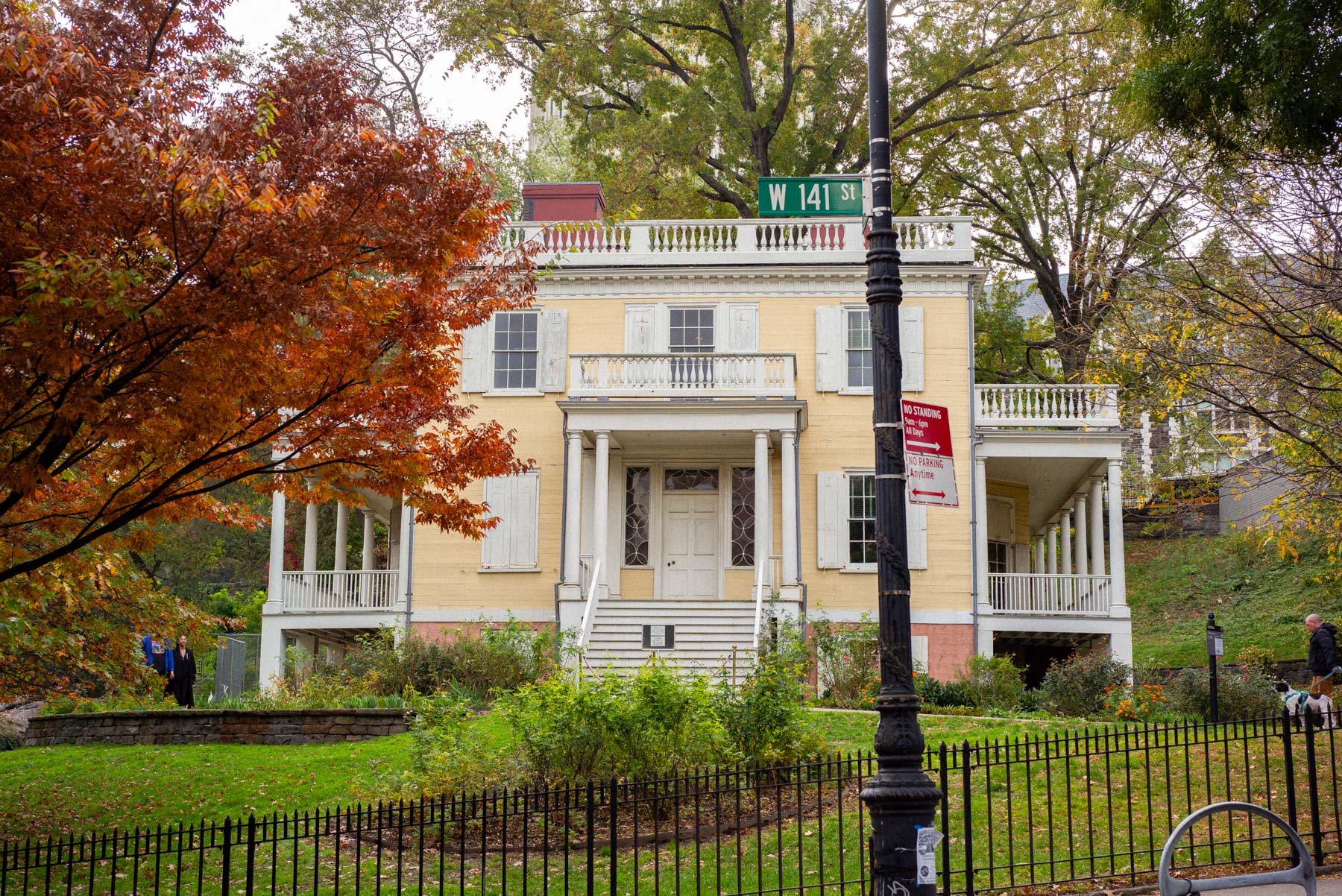
Hamilton Grange
Any Hamilton fans out there? If so, this is National Memorial in New York City that you can’t afford to miss. Hamilton Grange was the only home Alexander Hamilton ever owned. The mansion was declared a National Memorial because of Hamilton’s undeniable achievements. It was relocated a few block from its original location (twice), and the interior renovated with age-appropriate replicated furniture.
Fun Fact: The original location of the home had a landscaped circle of thirteen sweet gum trees, which symbolizing the thirteen colonies.
Website: Hamilton Grange
Address: 414 W 141st St, New York, NY
National Historic Sites in New York City
Quick Reminder: National historic sites are buildings that are directly associated with important historic figures or events that changed the course of American history.
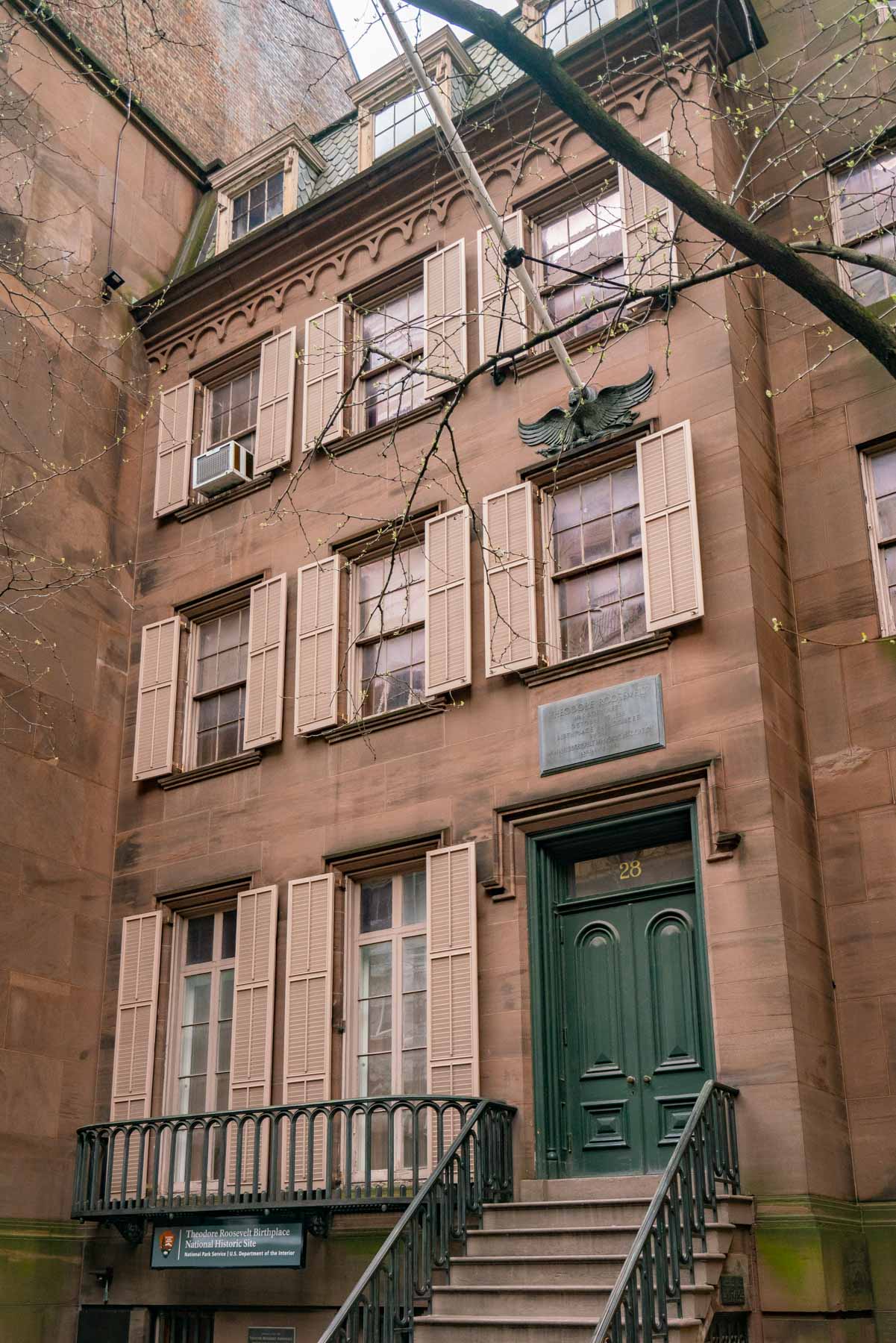
Theodore Roosevelt’s Birthplace
Theodore Roosevelt was born in a townhouse located at 28th E. 20th Street on October 27, 1858. His family lived in the home until 1872, which means Teddy was raised in this house for 14 years. His parents decided to move uptown (to 57th Street) when the neighborhood became too commercial for their liking.
The original building where Roosevelt lived was demolished in 1916, but when Roosevelt died in 1919 a replica of the home was promptly rebuilt. An architect (Theodate Pope Riddle) was tasked with reconstructing a replica of the house using the row house next door as a model (which was identical).
When the house was complete, it was refurbished with furnishings from the original house, exactly as it would have looked in 1865. Considering Theodore Roosevelt was the first U.S. president to be born in New York City, it’s no wonder why this important building is deemed a National Historic Site in NYC! Visitors can see the museum by guided tour only, tours offered on a first come, first served basis.
Website: Theodore Roosevelt’s Birthplace
Address: 28 E 20th St, New York, NY
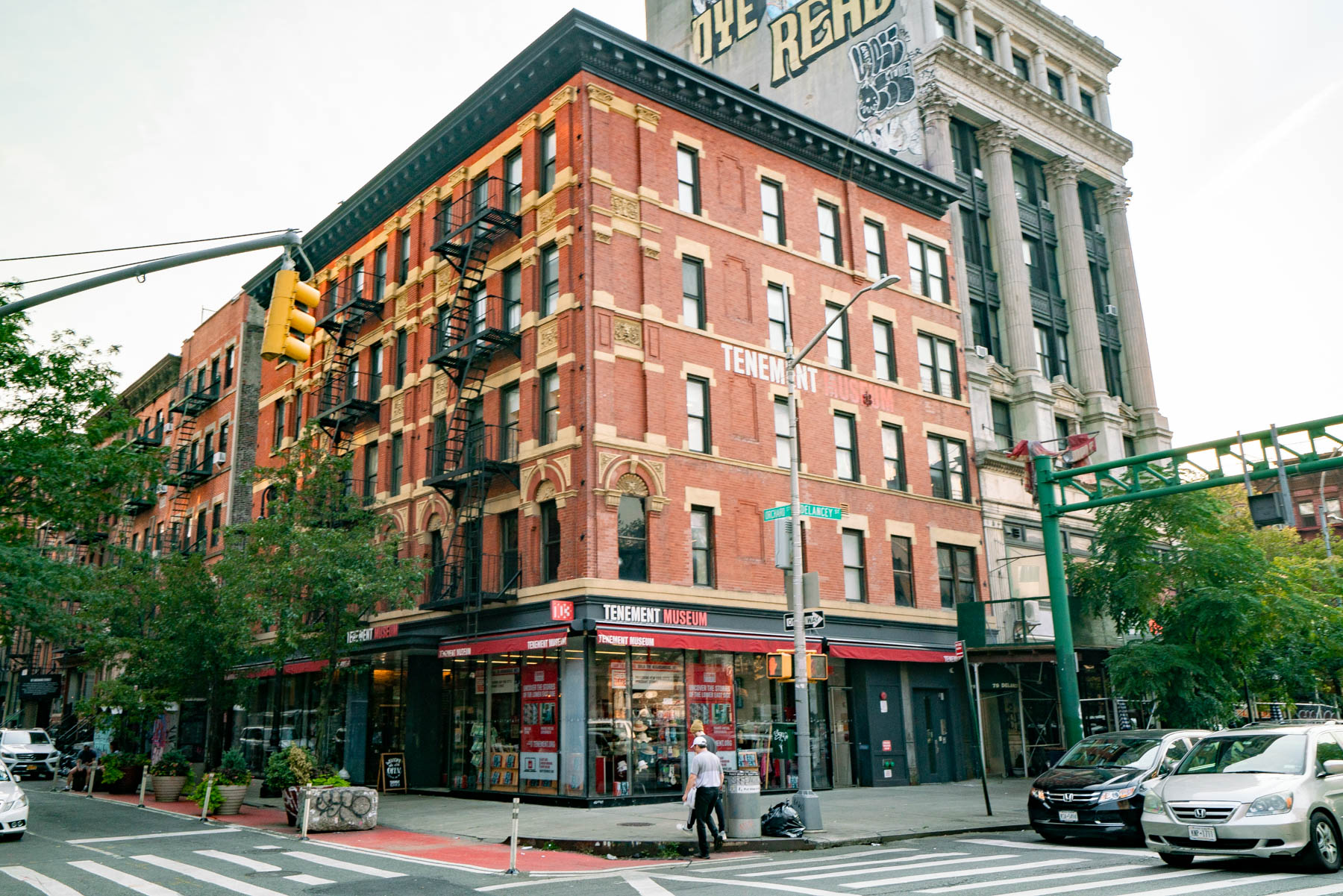
Lower East Side Tenement Museum
The 5-story Tenement Museum is comprised of two historic buildings dating back to 1863. These buildings were home to an estimated 15,000 immigrants (from 20 nations) between 1863 and 1935.
The idea for the musuem was born when personal belongings were discovered in a dilapidated tenement building which had been neglected for 50 years. The artifacts served as the impetus for the musuem, which strives to promote tolerance and historical perspective around the immigrant experience.
Visitors can sign up for guided tours to get a glimpse of the cramped living spaces of past residents. The humble rooms serve as a reminder that our national identity is best understood through the experiences of real working families. The rooms and stories evoke feelings of heartbreak and nostalgia. It’s hard to fully appreciate the devastating hardships immigrants endured in those early days.
The guided tours are engaging and add so much to the experience. The rich history comes alive through knowledgeable and passionate guides that are eager to share everything they know. Highly recommend!
Website: The Tenement Museum
Neighborhood: Lower East Side
Address: 103 Orchard St, New York, NY
So, Are There Any National Parks in New York City?
Technically (don’t you just hate when an answer starts like this?) there are no official national parks in New York City.
National Parks are wilderness areas protected for three reasons: conservation for future generations, the enjoyment of the public & preservation of wildlife. The strong focus on conservation, wilderness and wildlife makes national parks different from national monuments, memorials and historic sites.
But again, all the designations mentioned so far (national monuments, memorials and historic sites) technically (there it is again!) fall under the umbrella of “national park sites.” The reason? All national historic sites, monuments and memorials are managed by the National Park Service (the folks responsible for managing national parks).
At the end of the day, you might hear folks refer to the places on this list as National Parks in New York City, but they’re actually national parks sites.
Remember: The National Park Service manages all national parks, national monuments, national memorials and national historic sites. It’s very common for these various designations to be grouped together and called national park sites, but in reality the specific designations serve different purposes. Don’t let it confuse you or stop you from enjoying these incredible places!
NYC National Parks (FAQ)
FAQ: National Parks in NYC
There are 12 national park sites in New York City (we covered each of them on this list!).
The most famous national park site in NYC is undoubtedly the Statue of Liberty. Her right hand clutches a torch while the left hand holds a book inscribed July 4, 1776 (the date of the Declaration of Independence). The seven spikes adorning the crown represent the seven oceans and continents of the world, a symbol of universal liberty.
List of National Parks in New York City (Post Summary)
In sum, here’s the best national monuments, historic sites and memorials in New York City:
- African Burial Ground
- Statue of Liberty National Monument New York, New York
- Ellis Island
- Governor’s Island
- Castle Clinton
- General Grant National Memorial New York City
- Federal Hall
- Hamilton Grange
- Theodore Roosevelt Birthplace
- Lower East Side Tenement Museum
- Stonewall Inn
Related Articles:
20 Iconic New York City Buildings (You Should Know About)
8 Interesting New York City Nicknames (You Should Know)
25 Thought-Provoking Facts About NYC You May Not Know (Yet)
20 Helpful Tips for Visiting New York City for the First Time (Local’s Guide)
11 (Important) National Park Sites in New York City
20 Things I Wish I Knew BEFORE Moving to New York City (Firsthand Account)
Map of NYC National Parks Sites
Cheers!
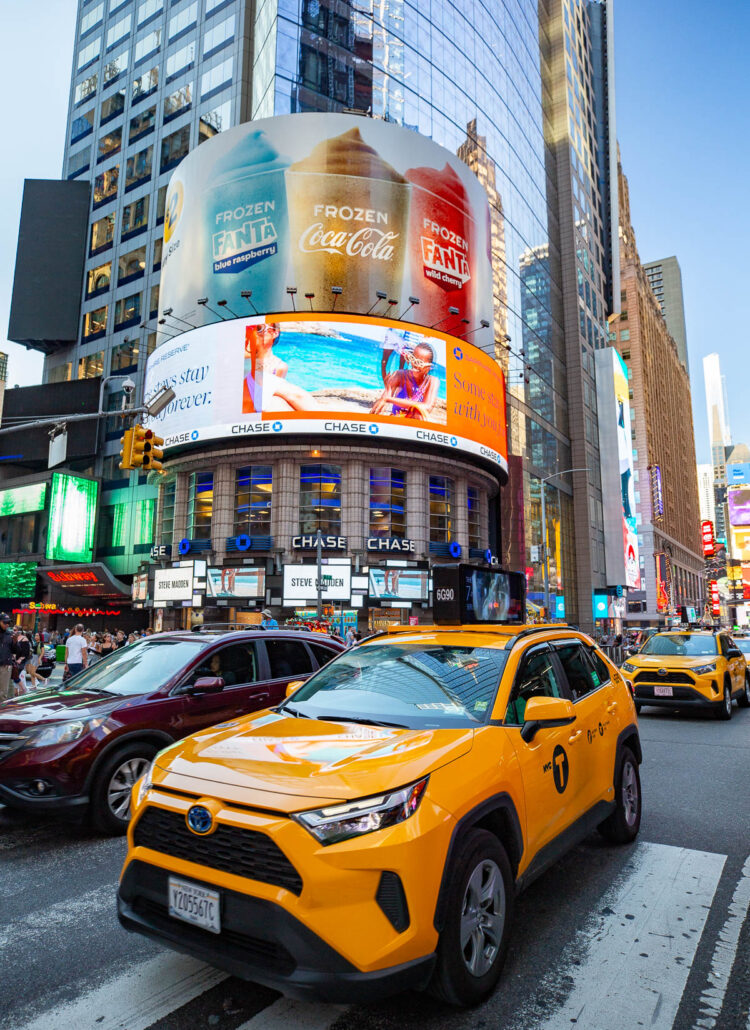
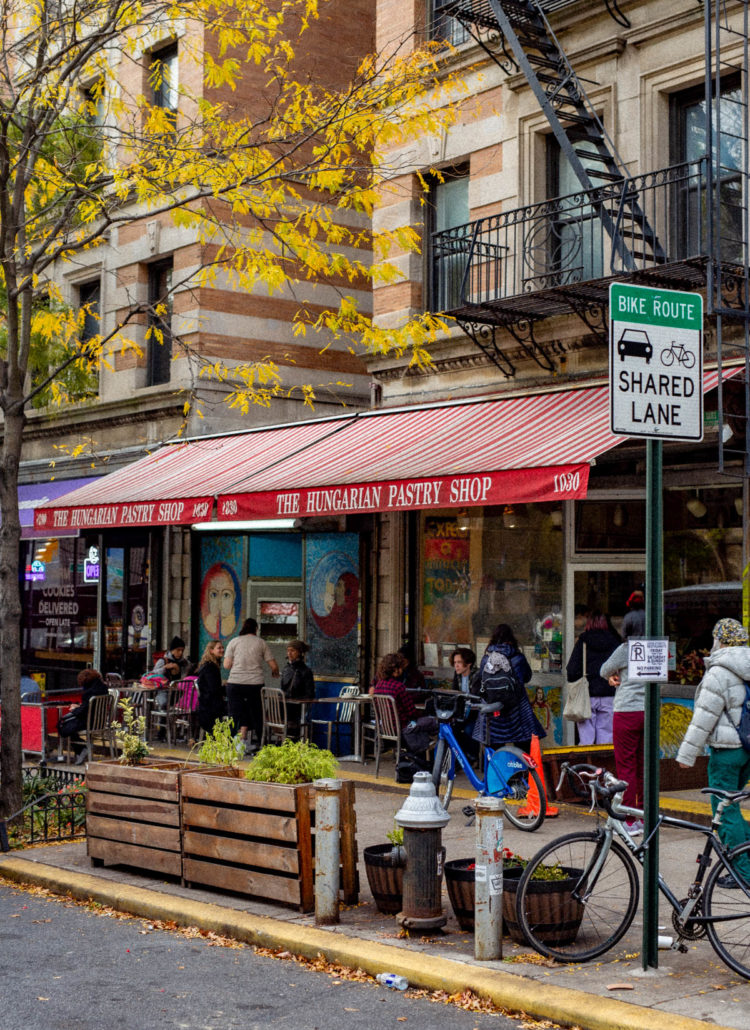

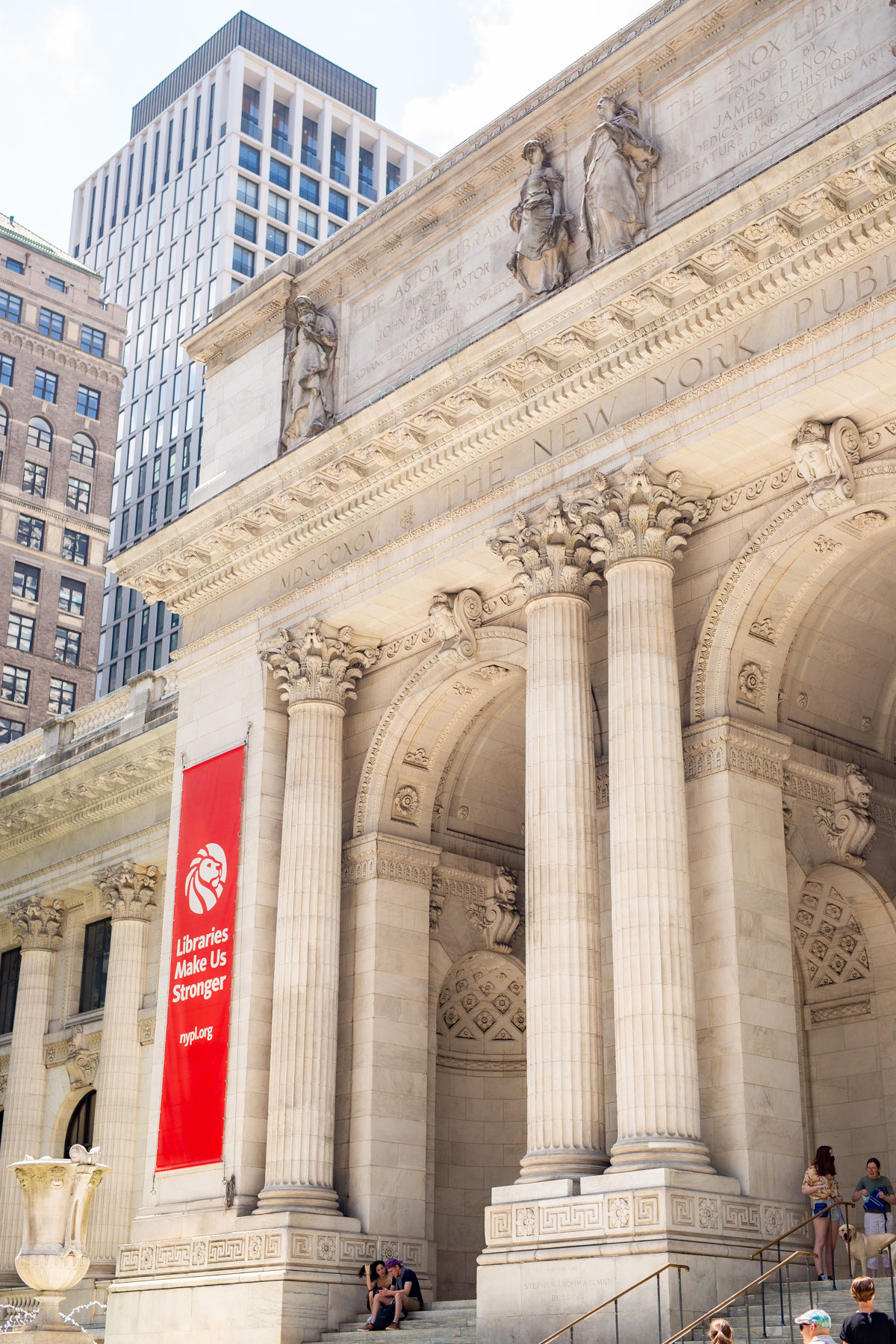
Leave a Reply